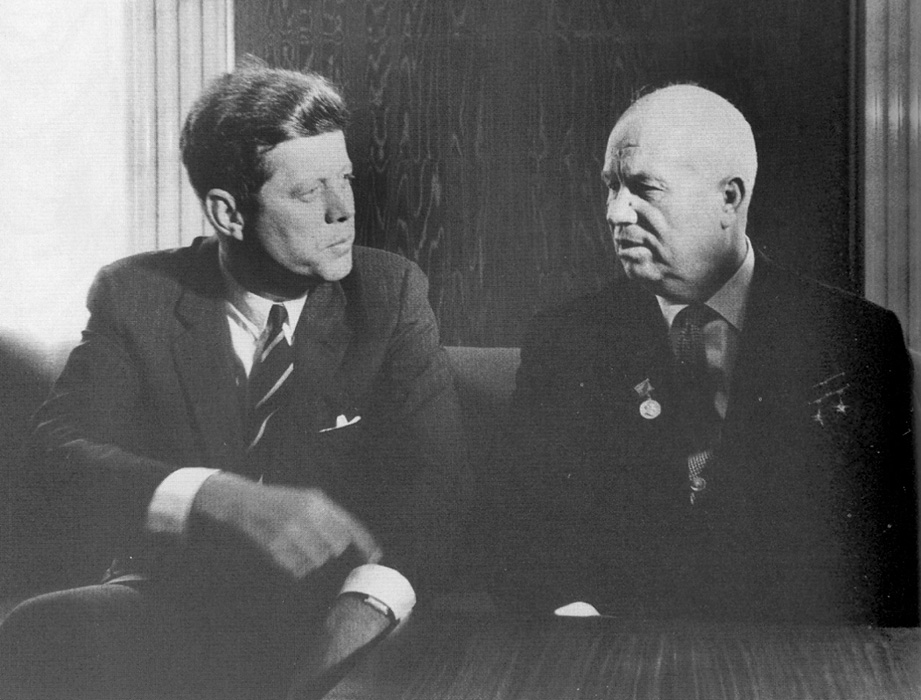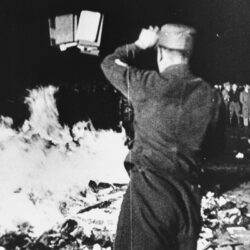How Close Were We to Armageddon? The Cuban Missile Crisis.
 The Cuban Missile Crisis may still prove to be one of the most important events in understanding modern International diplomacy. For five decades, scholars from many disciplines have trained their sights to the most minute details of what transpired between October 16th and 28th in October of 1962. The motives, temperaments, and psychology of President John F. Kennedy and Premier Nikita Khrushchev have been investigated by countless experts searching for insight into how the world managed to escape nuclear war at the moment when it seemed inevitable.
The Cuban Missile Crisis may still prove to be one of the most important events in understanding modern International diplomacy. For five decades, scholars from many disciplines have trained their sights to the most minute details of what transpired between October 16th and 28th in October of 1962. The motives, temperaments, and psychology of President John F. Kennedy and Premier Nikita Khrushchev have been investigated by countless experts searching for insight into how the world managed to escape nuclear war at the moment when it seemed inevitable.
Marking the 50th Anniversary of the Crisis, the journal International Relations is releasing a special issue that revisits this wealth of scholarship, revealing a story even more harrowing than the one we were previously taught. A suite of historians and political scientists, using newly applied theoretical and methodological approaches, lend fresh insight in to the minds of Kennedy and Khrushchev, and the role of subordinates and secondary organizational processes in getting us into, and then back out of, a near nuclear Armageddon. The edition is also an interesting negotiation between the study of historical events and social science methods.
Len Scott, Aberystwyth University’s Professor of International Politics , Dean of Social Sciences and expert on the Cuban Missile Crisis acts as Guest Editor. Scott, in his article “Eyeball to Eyeball: Blinking and Winking, Spy-planes and Secrets,” uses an investigation of Dino Brugioni’s Eyeball to Eyeball to highlight the role of military Intelligence operations and the use of cutting-edge technology in initiating and then negotiating the crisis. He calls into question the American trope that the US “won” the Cuban Missile Crisis. Scott uses the words of CIA members and military officers to demonstrate that the American side of the Crisis was punctuated by major intelligence fumbles and misinterpretations. More disconcerting, the entirety of Kennedy’s actions hinged precariously on the trust of a handful of experts who were able to read aerial photographs. In the end, while it remains unclear what effect the decision had on Khrushchev’s decision to pull out of Cuba, Kennedy had also privately promised to take NATO’s missiles out of Turkey.
In another article, Sergey Radchenko calls for caution when dealing with the body of work handling the Soviet Union’s series of events. He urges “Kremlinologists” to put brakes on the fashionable interpretation of Khrushchev as a romantic ideologist, and believing his main motivation in moving the missiles to Cuba was to protect fledgling Communist state from an imminent US invasion. He argues further that there is reason to believe that in the end, rather than being satisfied with negotiations with Kennedy, Khrushchev merely panicked at the idea of an actual nuclear conflict. However, Radchenko points out that key Soviet documents from the period remain classified, and it has become too tempting to cherry-pick quotes and simple statements from enigmatic and contradictory individuals to support any hypothesis. Ultimately he argues that the Cuban Missile Crisis remains a mystery in regards to the motivations of the key players, and it is likely to remain that way for some time.
The special edition holds more thoughtful revisits of classic texts of the Cuban Missile Crisis, ranging from single figures to the role of entire branches of the military. Ultimately, Scott suggests that when drawing lessons from this episode in history the most important part of “nuclear war” may have been the “nuclear” element.
“The more we learn about the risk of inadvertent nuclear war the less we should see nuclear weapons as epiphenomenal in the Cold War. Whatever the role of political ideology in the Cold War we need to understand that nuclear deterrence (however conceived) was an independent variable and perhaps a social construct in its own right. So long as we confront the problems created by nuclear weapons, we should strengthen our commitment to studying the Cuban missile crisis”.
For further information on the issue please see here.
Selected articles from the special issue will be free to access for a limited time here: http:/ire.sagepub.com/
Read Related Articles

























































































